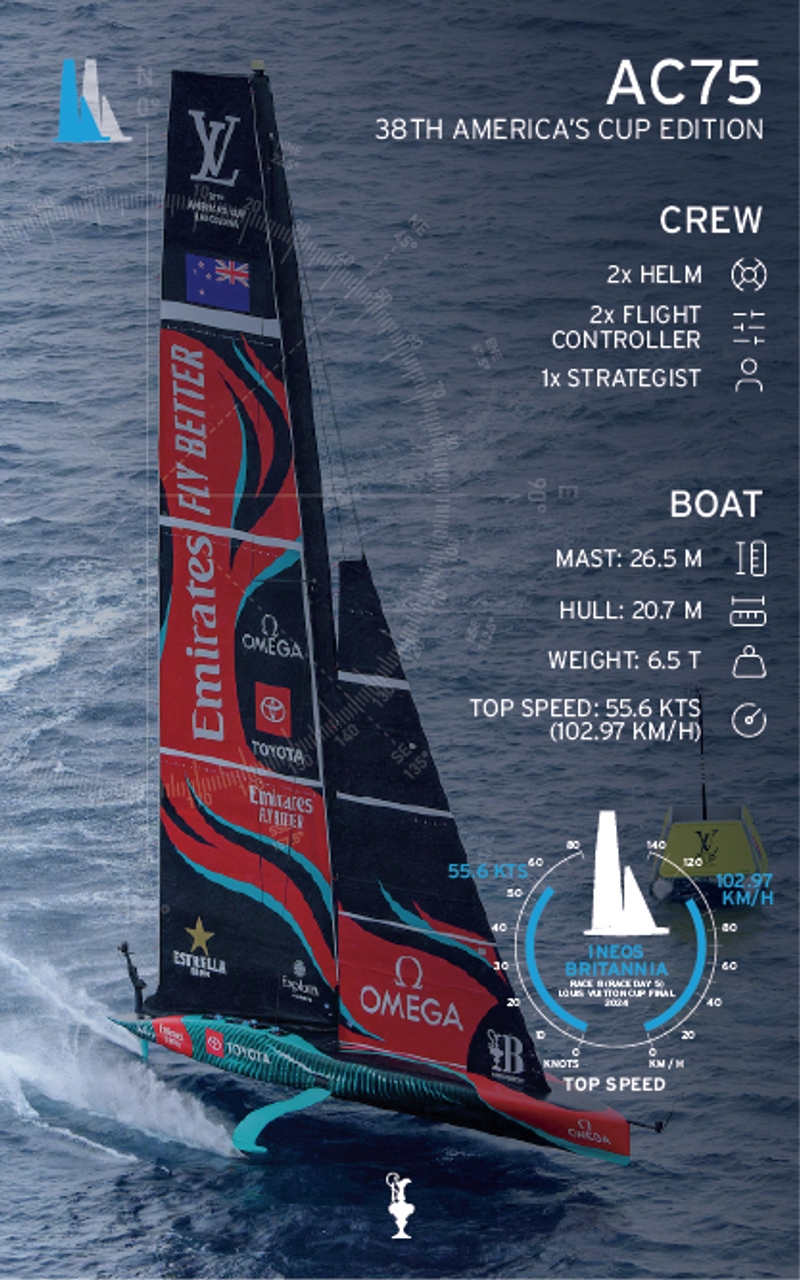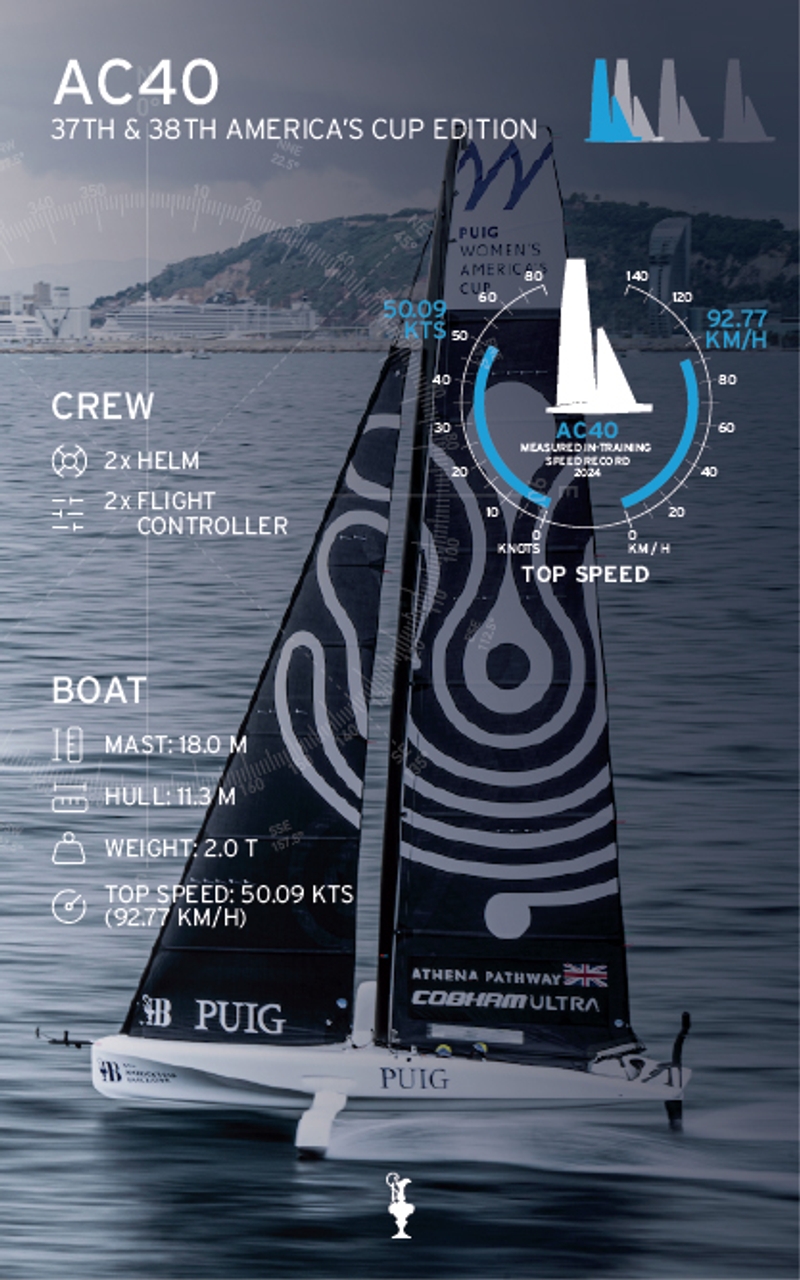In August 2012, the sailing world was transformed when a 72-foot catamaran lifted off the Hauraki Gulf in Auckland, New Zealand. Emirates Team New Zealand had introduced foils to the America’s Cup, revolutionising yacht racing and setting a new benchmark for speed and innovation.
Six years later, the release of the AC75 Class Rule in 2018 ushered in a new era. These flying monohulls demanded entirely new engineering and sailing techniques, pushing the sport into uncharted territory.
By the 36th America’s Cup in Auckland in 2021, the AC75s had proven their potential—delivering high-speed racing that captivated millions worldwide. It was no surprise the rule was retained for the Louis Vuitton 37th America’s Cup in Barcelona, with refinements including reduced crew, lighter hulls, and larger foils for faster, more efficient flight.
The evolution continued with the introduction of the AC40—developed to drive youth and women’s participation. This smaller sister to the AC75 launched in Auckland in September 2022 and immediately impressed, clocking speeds in the high 40-knot range under the command of Emirates Team New Zealand during first training sessions and eventually cracking the 50kts mark.
Both the AC75s and AC40s will return in 2027, when Naples hosts the Louis Vuitton 38th America’s Cup along with the Youth and Women’s events. True to tradition, fans can expect cutting-edge innovation and next-level performance as the sailing world once again watches the teams’ developments with anticipation.

